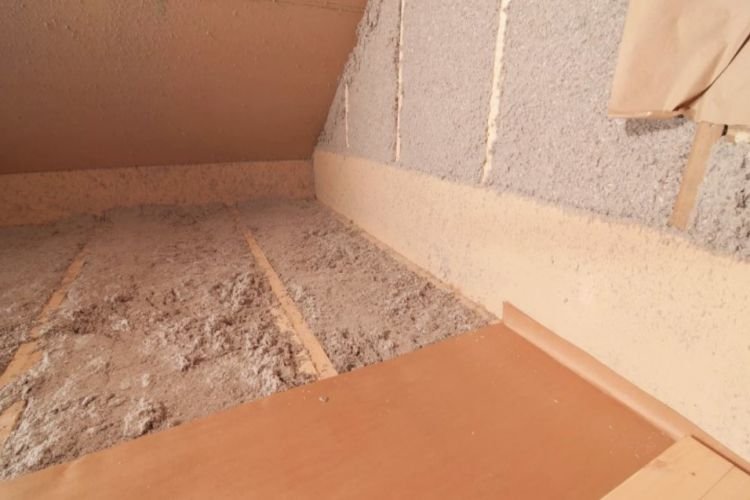 What is cellulose insulation? Comparing all types of insulation, cellulose insulation has the most recycled material. The material is made up of 75–85% recycled paper fibers, which are often derived from discarded newspapers that have been recycled. Fire-retardant materials like boric acid and ammonium sulfate make up the remaining 15%. Fiberglass, in contrast, contains around 50% recycled material.
What is cellulose insulation? Comparing all types of insulation, cellulose insulation has the most recycled material. The material is made up of 75–85% recycled paper fibers, which are often derived from discarded newspapers that have been recycled. Fire-retardant materials like boric acid and ammonium sulfate make up the remaining 15%. Fiberglass, in contrast, contains around 50% recycled material.
Only loose-fill cellulose insulation is available, and only the blown application method may be used to install it. It is superior to its fiberglass predecessor in many ways, including soundproofing capabilities and a lifetime warranty. The advantages and disadvantages of cellulose insulation are as follows. The time to find out is now.
Cellulose insulation’s benefits
We decided it would be better to start with the benefits of cellulose insulation when outlining its advantages and disadvantages. Here are our top four justifications for choosing cellulose insulation:
Environmentally Friendly – This choice of insulation is created from recycled paper, as was already mentioned. This helps to put vast quantities of post-consumer paper to good use. This achieves perfect harmony by eliminating one issue while resolving another! Newspapers may be converted into insulation without being bleached or having the ink scrubbed away, using relatively little energy in the process.
Exceptional Performance – When it comes to lowering your energy costs, cellulose insulation offers a considerably greater performance value than fiberglass insulation. By selecting cellulose over its substitute, air tightness levels can be raised by as much as 30%. It may function without density as well.
Fire-retardant – The substance is made fire- and mold-resistant by boric acid. Additionally, this renders the substance repulsive to insects.
In the event that a pipe burst or your roof suffers a significant leak, cellulose insulation may absorb moisture. Unlike other insulating materials, cellulose is known to absorb moisture rather than just hold it on the surface.
Cellulose insulation’s drawbacks
Not every technique is perfect, and cellulose insulation does have certain disadvantages for a lot of individuals. Here are a few illustrations of these drawbacks:
Materials are Low – The chemical element boron, which is now in limited supply, is used to make boric acid. Boron is only found in 3 known mines worldwide, and even these don’t produce enough to meet the demand at the moment. Environmental damage is also caused by mining.
It’s a Tiny Bit Messy – Cellulose is not packaged into tidy little containers as Batt insulation is. During remodeling, loose fibers are challenging to clean up and contain. Installing cellulose insulation without causing damage requires a lot of skill and expertise.
Possible Moisture Problems – If your roof leaks heavily or a pipe bursts, cellulose insulation may collect moisture. Unlike other insulating materials, cellulose is known to absorb moisture rather than just hold it on the surface.
The Spray Foam Approach!
After giving it some thought, you could have decided against using cellulose insulation, especially in light of the fact that one of its drawbacks poses a significant safety risk. There is an environmentally friendly substitute that comes from the United Kingdom and offers all the advantages of cellulose without the unsettling drawbacks that the latter imposes.
One of the most advanced loose-fill insulation techniques on the market right now is the new approach, known as Spray Foam Insulation.
Few insulation materials, even after installation, provide the same degree of safety and financial benefits. Additionally, unlike many other forms of insulation, LogicFoam spray foam insulation doesn’t settle or deteriorate with time.
The product will grow up to 100 times its original size after being blown into position. No matter how big or small the structure, you may utilize it in a variety of applications even the most complicated ones.
Final thoughts
Contact a reputable Insulation Company to install the right insulation system for your home. After knowing the pros and cons of cellulose insulation, you may think to choose this insulation. But remember, don’t just leap in. Evaluate and then take the decision.




